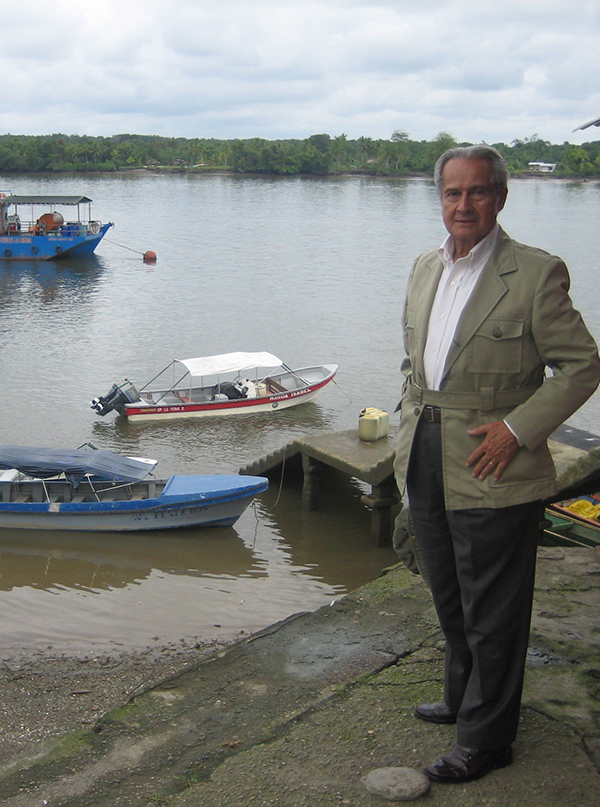MIT Alumnus' Diverse Career Leads to Visionary Waterway Project
-
-
slice.mit.edu
- 2
Filed Under
Recommended

Civil engineers are trained to think big, and in his 87th year, Mariano Ospina Hernandez '49 is doing just that. After a distinguished career in Colombian business, politics, and diplomacy, he is leading an international initiative to link South America’s major rivers into a transportation network running from Venezuela to Buenos Aires.
The proposed South American Waterway System (SAWS) would open new connections for a continent that has struggled with economic integration and development. In addition to boosting exports and intracontinental trade and travel, it would be far more fuel-efficient than road or rail transport.
“The U.S. has about five million kilometers of highways; all of South America has about 400,000,” explains Ospina. “By linking six major rivers—Amazon, Orinoco, Putumayo, Paraguay, Paraná, and La Plata—we can create 40,000 kilometers of navigable waterways that can carry as much as a four-million-kilometer highway network.”
The project requires extensive civil engineering work, notes Ospina, plus “political engineering, obtaining agreement of all these countries to work together, and financial engineering, to arrange the necessary $50 billion to $60 billion and ensure ROI.”
Ecological and social questions also abound. Ospina has enlisted MIT and Harvard faculty—including his mentor, MIT professor of civil and environmental engineering Fred Moavenzadeh—for analytical and planning assistance. The work dates to 1994, when Ospina lived in Cambridge, researching protection and development of South American jungles and rivers.
SAWS has won widespread interest, and the Colombian government is reviewing a report and proposal that would open the door to a formal feasibility study. Ospina is uniquely prepared for the project. In addition to earning a Course 1 SB, a biology degree from the University of Bogotá, and a Harvard master’s in city planning, he has run several construction firms and a coffee company, been CEO of the Agricultural Bank of Colombia, held local and national elected office, and served as Colombia’s ambassador to West Germany. Today he heads the Fundación Mariano Ospina Pérez, which carries on rural and social development work in the name of his father, Colombia’s president from 1946 to 1950.
“I feel very happy to have worked in so many areas,” says Ospina, who credits some of his vigor to living in the “eternal springtime” of Bogotá, some 2,600 meters above sea level. He spends as much time as possible with his wife, Helena, six children, 19 grandchildren, and four great-grandchildren.
This article originally appeared in the May/June 2015 issue of MIT Technology Review magazine.








Comments
Adv. Suman Dash
Fri, 01/15/2016 10:34pm
Hello,
Mr.Mariano Ospina Hernandez, would you be kind enough to share your Knowledge and Excellence in Water Transportation and Water Systems management for INDIA, a Country full of Water bodies. Genius Innovative Vision as yours would be a great help to the People of my Country and to Mankind.
George lechter
Thu, 05/21/2015 8:25pm
Unlike Harvard grads with the easy doctor or lawyer life us MIT nerds have to invent the internets and crazy stuff like that.